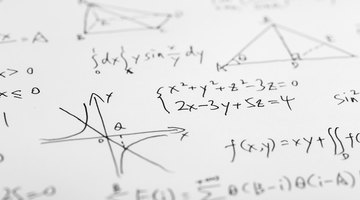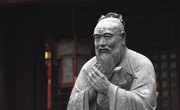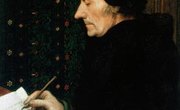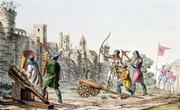Isaac Barrow is known for being the teacher of Isaac Newton, who is perhaps a more widely known mathematician, but Barrow's own discoveries and work were of tremendous importance and helped to pave the way for virtually every mathematical discovery that came afterward. Isaac Barrow is perhaps most revered for his role in the development of the discipline known as infinitesimal calculus and, more specifically, being responsible for the discovery of calculus's fundamental theorem.
Isaac Barrow's Background
Isaac Barrow was born in London in 1630 to Thomas Barrow and his wife Ann. Barrow the elder was a linen-draper by trade, and the family was able to afford to send young Isaac to school at Charterhouse, where he was reportedly a rambunctious, difficult to control student. Later, when he had settled down a bit, he found himself at Felsted School, where he excelled in several subjects including logic, Hebrew, Latin and Greek.
After leaving Felsted, Barrow matriculated at Trinity College in Cambridge due to the support of a member of the Walpole family. Barrow worked hard in college and rose to the challenge put forth by Trinity College's rigorous curriculum. He excelled most particularly in the areas of classics and mathematics. After he graduated in 1648 Barrow became a Fellow, and five years later, he received his master's degree. Barrow later became a candidate for a professorship at Cambridge but had no interest in signing the engagement to uphold the commonwealth, which was a requirement, and instead made plans to go abroad for a period of time. By getting travel grants, Barrow was able to spend the next four years in France, Smyrna, Constantinople and other cities across the globe. He became an apt seaman and was known for his wit and intelligence both at home and abroad.
Isaac Barrow: Mathematician
Upon his admittance as a Fellow, Barrow had taken an oath to study divinity. After a spell studying medicine, Barrow returned to his scholarly pursuit of divinity, a course of study which brought him to an interest in astronomy. His pursuit of astronomy and the study of the heavens helped guide Barrow to the study of geometry, which became a consuming passion for him. He taught himself the subject and began to write a more simplified explanatory version of Euclid's "Elements," which was published in 1655 and became the standard text for mathematics study for nearly 50 years.
At this point, Barrow was working as a humanities professor and was hoping to take the Greek professorship position as soon as it became available, but he found that due to his political beliefs, he was blocked from obtaining the post. Eventually, Barrow was hired as a professor of geometry at Gresham College in London. There he taught geometry for one hour a week in English and another hour a week in Latin. Barrow took his teaching duties very seriously and planned to publish the lectures that he gave during this period. Unfortunately, although he did capture the lectures he gave to his students on topics like perspectives and the projection of spheres in writing, he lent them to a friend of his who soon lost them.
Barrow's lectures on optics were eventually published by John Collins in 1669. The next year, Collins published Barrow's lectures on geometry, and he published Barrow's lectures on mathematics in 1683. This last volume was a collection of lectures on the importance of mathematics and the modern lens through which Barrow hoped his students would see it.
The lectures were developed with the intention of reviving an interest in mathematics at Cambridge. Barrow was determined to present mathematics as a relevant field with emerging new knowledge and applications. These lectures were an effort to prove that this was so. Within these lectures, Barrow sought to classify different mathematical disciplines. In doing so, he made the argument that algebra was actually a branch of logic and not of mathematics. In Barrow's mind, the foundational mathematical science was geometry because it was comprised of arithmetic, and as Barrow explained, all mathematical numbers represent geometrical measure and magnitude.
Barrow lectured on other areas of mathematics as well. He gave lectures that discussed divisibility, congruence, time, space and the concept of mathematical equality. He also lectured on the concepts of ratio, proportion and measurement. It was the lectures that Barrow gave around geometry, however, that were of greatest influence on Isaac Newton.
Isaac Barrow and Isaac Newton
One of the most talented students that Barrow had a chance to influence was the man who would become Sir Isaac Newton. Barrow was named the Lucasian Professor of Mathematics at Cambridge University in 1663. However, several bouts of the plague interrupted the school's schedule, and the university was forced to close for months at a time. When it finally reopened in the spring of 1667, Barrow began to deliver lectures on geometry and on optics. These were the lectures that Isaac Newtown attended. Following the lectures, Newton and Barrow began to have in-depth conversations about the material. Newton found that Barrow's work was a tremendous guiding influence, and it helped him to continue to pursue his own work.
When Barrow resigned from the Lucasian Professorship in 1669, he opted to cease the practice of mathematics. Instead, he became honored as the nation's greatest scholar and was named the Master of Trinity College. Then, he began to spend his time and attention on working to improve and support the university. Upon his departure from Cambridge, his post was taken over by Isaac Newton.
Isaac Newton's Contributions to Math
Newton was only 27 years old when Barrow recommended him to the post of Lucasian Professor of Mathematics. However, Barrow had recognized Newton's intelligence and felt certain that this was the role for which his genius was destined. Newton was given the post, and during this period of his life, he made some of his most significant discoveries.
The answer to the question "What did Isaac Newton discover?" is almost always "gravity." This is true. Newton's experience of being hit in the head by an apple led him to the mathematical research and proof that allowed him to assert the existence of gravity. However, Newton, the protege of Barrow, contributed a number of other significant discoveries to the discipline of mathematics.
Newton was responsible for replacing the refracted lens in a telescope with mirrored lenses that would display the refracted image to the human eye. This was known as a "reflecting telescope" and was significantly stronger than previous iterations of the instrument. Eventually, he was able to shrink the size of the telescope itself while still magnifying observed objects to about 40 times their size.
Newton's 1704 book "Opticks" helped to analyze the concept of the color spectrum. Newton's discoveries in this arena proved that, unlike the previously held belief that light came from lightness or darkness, color was actually a spectrum and that all the colors on the spectrum combined to produce white light.
Related Articles
References
Writer Bio
Ashley Friedman is a freelance writer with experience writing about education for a variety of organizations and educational institutions as well as online media sites. She has written for Pearson Education, The University of Miami, The New York City Teaching Fellows, New Visions for Public Schools, and a number of independent secondary schools. She lives in Los Angeles.











